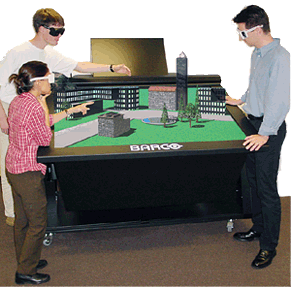|
|
The Internet has opened new ways in which (spatial) data is transferred, accessed and used. In the early days of GIS, data
had to be stored on physical media before it was to be transferred. But, the amount of the data made this transfer very cumbersome
if not impossible, and often the storage media were not compatible between different type of computers such as mainframes,
PCs and Macs. Because data on one machine wasn't accessible by another, often several copies of the same spatial data file
existed, which made the update process a very difficult task that was prone to errors. Nowadays sharing of data is quite a
bit easier. A lot of GIS data and functionality is accessible over a network by means of a web browser and many GIS applications
offer ways to connect directly to the internet or a database server. These communications are made possible by the modular
architectures of both the GIS application and the operating system. In this unit, we will show different types of system architectures
and we will give some basic information about internet technologies.
|
 3D visualization table ETHZ
3D visualization table ETHZ